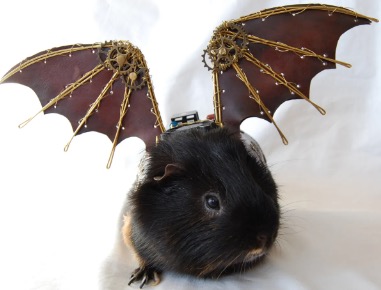By Sophia Byl
Making up 40% of the world’s mammal population, rodents are a diverse and hardy group of animals. They can be found thriving in great open plains, muddy rivers, and freezing tundra, all while surviving mainly off of grasses and plants. In addition to their excellent survival skills, rodents also are among the most intelligent of mammals, exhibiting complex skills such as cognitive biases towards certain objects and even possible metacognition (awareness of one’s thought processes).
Despite this variety of achievements possessed by the rodents, they are lacking in one department: the ability to take to the skies. Flight, though a very energy-expensive process, allows an organism the ultimate freedom and unlocks countless evolutionary possibilities for future generations. There have been many proposals for why flight even originated as an adaptation: better escape options for prey, a larger pool of prey for predators, or migration to survive harsh winter conditions. This variety of reasons leads to the variety of wings we see today in nature. The large, strong wings of migratory birds are built for endurance, dragonflies’ two pairs of wings give them immense control over their flight paths, and birds of prey such as falcons owe their extreme speed to their wing structures.
Up until recently, the only known flying mammal was the bat, which in itself is quite an odd animal. Being nocturnal and capable of echolocation, it fills a strange niche in the ecosystem. However, bats have been dethroned from this unique position with the discovery of Cavia volare, common name flying guinea pig, in the deciduous forests of Connecticut. Ecologists are heavily researching this fascinating new species in an attempt to determine how and why exactly it might have evolved.
Only about 60 individual specimens of Cavia volare have been spotted as of the publication of this article, but scientists estimate that up to 2,000 could be living in Connecticut alone, with even more inhabiting the other states in the Northwest. They appear to be social animals–similar to the domestic guinea pig’s close relative, the capybara–living in groups of 8 to 10 members. Ecologists have affectionately dubbed a group of flying guinea pigs as a “cloud”, which also happens to be one of the collective nouns for a group of bats. All known specimens native to Connecticut have been spotted with bat-like wings, leading experts to believe that some sort of convergent evolution must have taken place. Guinea pigs are not very closely related to bats, but the fact that they’re both mammals must have contributed somehow to their similar wing structure.
Scientists at the University of Connecticut (UConn) have also, excitingly, succeeded in capturing a pair of female Cavia volare for further research. The flying guinea pigs appear to be quite docile, with care being quite similar to that of the traditional domestic guinea pig, except for the fact that they can, obviously, fly. The specimens in captivity are situated in a large aviary-pen with ample space to fly around in, along with a variety of vegetation for eating and hiding places for sleeping in.
An interesting point that the researchers from UConn noted was the behavior of the domesticated guinea pig known as “popcorning”. This is when the guinea pig jumps in the air, usually out of joy, and it could be a reason for flight evolution. Experts at the University of California’s Museum of Paleontology have hypothesized that flight evolved in other animals through a jumping behavior–this jumping could have allowed bird or bat-like creatures access to better or more food, while not being too detrimental to their energy reserves. Could the humble guinea pig be reaching to the skies for nutritional reasons? The ecologists caring for the flying guinea pigs in captivity state they will begin to introduce new food sources to the Cavia volare enclosure, such as the leaves of very tall trees and even some flying insects, to see whether the species is strictly herbivorous or not. Stay tuned as the research on the flying guinea pig continues–all information on the species is relatively new, after all. UConn is in the process of making sure the two females in captivity are clear to be exhibited in zoos or museums (currently, they are experiencing a small problem involving flight control and crashing into walls). Hopefully, these two Cavia volare will be followed by many more to c










